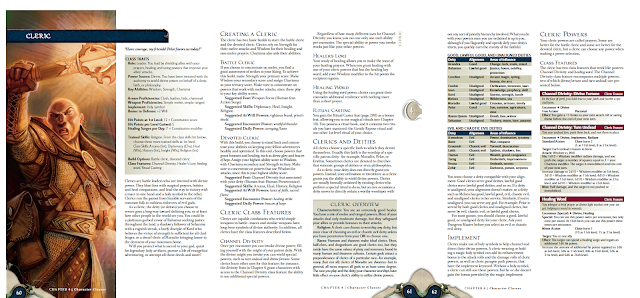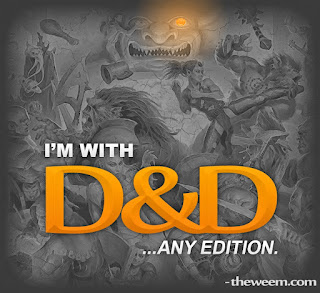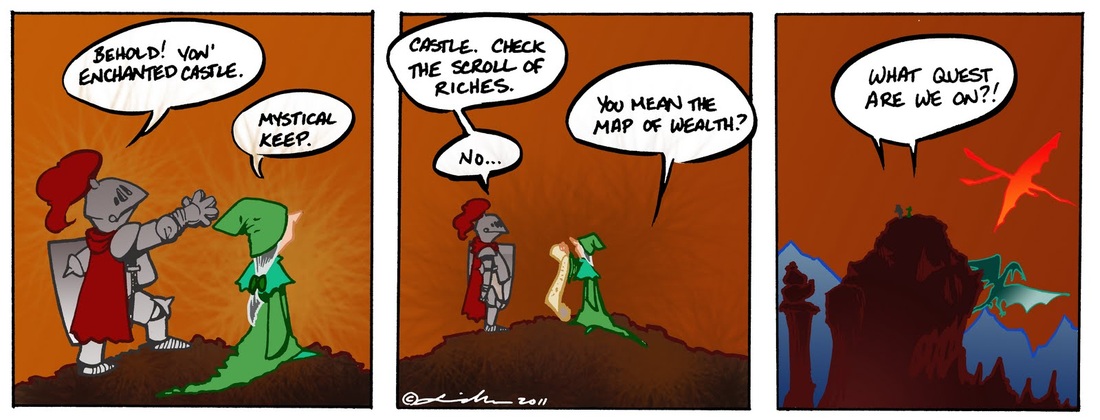Edition wars have been around for a long time in role playing games and have affected a wide variety of role playing IPs. TSR experienced a major edition war regarding Advanced Dungeons & Dragons* when they released the 2nd edition of the game*. Players complained about the removal of Demons and Devils from the monster manuals and critiqued a number of the rules. At the time, the company was often referred to as T$R. They weren't alone though. GDW has experienced a number of edition wars over various Traveller* rules sets, with the original "Classic Traveller" rules set coming out as the still dominant setting and style. Games like 2300 AD* and MegaTraveller* were excellent, but they didn't click with the audience the way one might hope. Even Champions had a bit of an edition war with the release of their 6th edition rules* set. The 5th edition of Champions* expanded the player base and had a number of excellent sourcebooks and supplements, It also marked a return to the base mechanics after a FUSION version called Champions New Millenium had its own edition war. The game had hit the telos of its initial design, so any new rules set would have to make significant changes. It did and that split the fan base. For the record, my favorite version of the rules is 4th edition*, but I own all of them and think they are all very good.
When a fan base is divided, it can lead to a reduction in sales and open up the market to competitors. That's one of the reasons that many companies have taken a careful tack when releasing a new game or a new edition. Paizo and Wizards of the Coast opened up the playtesting of new editions to the public in order to incorporate the fan base in the design process for the Pathfinder and Dungeons & Dragons 5th edition respectively.
The point of all this prologue is to say that when 4th edition Dungeons & Dragons was released, edition wars were nothing new in gaming and they were something that any marketing and design team should have been aware of and should have been seeking to combat. Instead, they made what I consider to be a couple of major errors. The first was in the physical layout of the rulebooks and the balance of mechanics and background material presented within them. The second, and much worse, is that they attacked their consumer base and disparaged their own rules sets. They made a "this new edition is better and all the older ones sucked" pitch. Needless to say, this was not a wise choice. I'm leaving out the third possible error, tying the game to a digital platform that never manifested, because that involves a very unforeseeable murder/suicide.
Let me return to what I consider to be the first error in the presentation by looking at the differences between how 3rd edition characters and 4th edition characters where presented to players in the books. Let's have a look at the first page of a 3rd edition character class, the Cleric. Don't worry about what the actual content of the mechanics is, rather look at how things are presented. There is a ton of background and explanatory text, both for what a Cleric is and what their abilities are. Yes, there's a lot of content there and it's wordy. That might be intimidating to some, but it is filled with rich information.
 |
| The Cleric for 3rd Edition D&D |
Contrast this with the 4th Edition Cleric. Once again, it's not the actual mechanics I'm asking you to examine. Look at the layout. Where we have only one "spreadsheet cut and paste" in the 3rd edition presentation, we have four or five in the 4th edition layout. In some ways, it's a cleaner layout. It's more approachable, but once you start looking at the ability outputs it becomes very much like reading spreadsheet outputs and less like reading abilities. The presentation is mechanics focused, almost as if they intended you to fill out cards or something similar. The fact that they later sold "power cards" makes this more and more evident. It looks far more like a Magic the Gathering card breakdown manual, or a video game hint book (back when those existed), than it does a role playing game manual.
 |
| The Cleric for 4th Edition D&D |
Back in February of 2011, a couple of years into 4e, Robert J Schwalb who worked on the design team, wrote a blog post asking if "the format matters." In that piece he wrote:
Fourth edition’s presentation abandoned nearly everything familiar about the game’s look. Eight years of 3rd edition, I think, created strong expectations about how the game should read and since the game didn’t match the visual expectations, it certainly must not match the play experience. Yes, there are considerable mechanical changes that alter the play experience somewhat, but compare how the game plays now to how the game played in the twilight of 3rd edition. Just look at Tome of Battle, Complete Arcane, and many of the variant rules presented in Unearthed Arcana (complex skill checks, healing surges, and so on). In them you can find the proto-rules that would eventually evolve into the mechanical underpinnings of 4e. They are different, but not as different as I imagine some folks believe. I wonder if those changes might have been more palpable had we shifted back toward the old presentation, even if doing so meant that the game would be harder to learn.
Let's have a look at what Robert's reformatting of the Cleric (now I wish I'd selected the Cleric for the others) looked like. Note that Robert hasn't filled in all the content, so don't worry about the lack of text. Just look at the layout. One thing that should strike you is how this looks exactly like 5th edition playtest materials and that it looks very similar to 3.x's layout. Had the design team opted for a presentation like this, it might have been slightly less shocking and been one less hurdle to overcome in order to minimize edition war effects.
 |
| Robert J Schwalb's Reformatted Cleric |
Regardless of how formatting would have had the potential to minimize anti-4e backlash, there is one thing that is certain and that is that the marketing team did the game no favors with their marketing campaign. Below, I've embedded the D&D 4th Edition Teaser marketing video. You can watch the whole video and you can feel the meta-cognitive irony and seeming disdain for earlier editions of the game. In particular, I'd recommend watching at 1:31 for the "Okay, what is THAC0 again" question and to 2:26 to see how the 4th edition marketing represented 3.x by mocking that version's rules for grappling.
D&D 4th Edition "Teaser" Marketing Video
First, the presentation was poor. Or perhaps it’s better to say it was a failed experiment. Every power every ability every whatever you wanna call it was choked in meaningless flavor text. They simply overdid everything which made understanding your character and their abilities a perpetual chore.Second, I really feel that they fail to understand how unpleasant it is to have abilities you could use only once per day succeed or fail. Every character is structured to work with this unpleasant dynamic.Further I don’t think that they understood the psychology of how anemic the at will or encounter powers would look when compared to the daily powers. This exacerbated the frustration of the fact that your best power or powers or mostly One-A-Day type abilities that we’re gone whether you succeed or fail that using themI also think they overestimated peoples desire to use miniatures or underestimated how many people prefer theater of the mind and always have.They also completely disregarded the sort of role-playing game Golden rule which is that most combats should last approximately three rounds.
Tiefling vs. Gnome
Interview with a Dragon
Interview with a Mindflayer
* Affiliate Link














